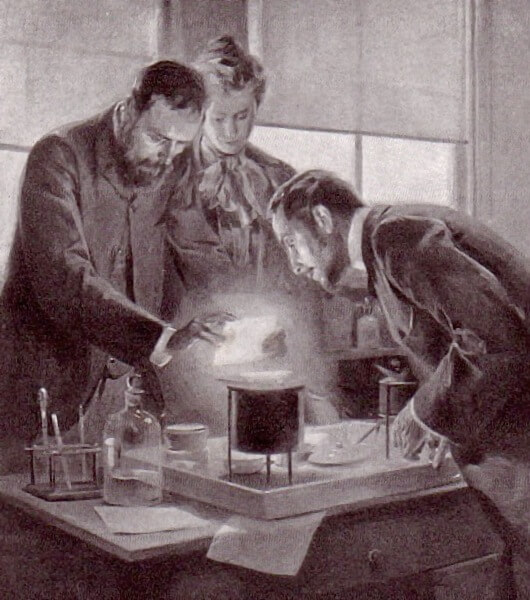How to Recover Radium, Uranium & Vanadium #6

Recovery of Uranium In the extraction process practically all of the uranium in the ore is dissolved in the nitric acid, a little remaining in the insoluble residue because of incomplete washing. An average of 2.3 per cent of the uranium oxide in the ore has remained in the residue, varying in different carload lots […]
Processing, Extraction & Recovery of RADIUM from Uranium Ore #5
Radium Measurements One of the most essential factors in the successful production and concentration of radium consists in following the material being concentrated, by means of careful quantitative determinations, through all the various operations from the original ore to the final product. This involves the radioactive analysis of a large number of products differing widely […]
RADIUM Extraction & Recovery #4
Refining in the Plant The first treatment of the radium-barium sulphates is of great importance, as the whole capacity of the plant, as far as the radium goes, depends upon this first treatment. If the sulphates can not be handled as rapidly as produced, the actual amount of radium refined each year must necessarily be […]
VANADIUM & URANIUM Extraction and Recovery #3
As the sodium uranate requires re-treatment, owing to the fact that it carries vanadium, it is not necessary to wash the cake as completely as might otherwise be required. Most of the sodium uranate carries 7 to 9 per cent V205. It has been found practically impossible to obtain a precipitate that does not carry […]
URANIUM, RADIUM & VANADIUM Ore Processing #2
The method of treating carnotite, a uranium, ore used by the Bureau of Mines is outlined in this chapter. Leaching, Filtering, and Washing Ore The ore is ground to 20 mesh and is leached with strong hot nitric acid in acid-proof earthenware pots. The amount of acid used is 121 pounds of 100 per cent […]
Mining Stope Development Method
Stoping The foregoing discussion relates to general mine development and covers the work required to reach and penetrate the ore bodies and to provide the main arteries through which the ore is taken from the mine. These arteries provide mine drainage and avenues for travel and transportation of men and supplies and for installation of […]
Electronic Scrap Precious Metals Recovery: Gold, Silver, Platinum
The Bureau of Mines investigations described in this report were undertaken to devise a process to economically recover precious metals and copper from low-grade, complex electronic scrap generated in large quantities by military and civilian electronic operations. Leaching with various media is applicable to certain selected items of electronic scrap but cannot be practically applied […]
RADIUM, URANIUM & VANADIUM Extraction & Recovery #1
Until recently little had been published on methods of treating any of the uranium ores for the extraction of radium, although a number of patents have been issued both in this country and abroad. Therefore persons interested in methods of extracting radium have had little to guide them, as details of the methods in use have […]
Mining Levels: Stations, Drifts, & Crosscuts
Lateral Development In tabular, dipping lodes and thick massive deposits the ore bodies are developed laterally at several horizons spaced at more or less regular vertical intervals. In areas of high relief each horizon may be developed by driving an adit into the side of the hill, from which branch headings are driven as required. […]
Effect of Zn3Ag2 on Desilverization of Lead
Refiners of lead by the Parkes process have always been solicitous of recovering the zinc used in the desilverization, and justly so, as the loss in zinc constitutes one of the heavy costs in this method of refining. Part of this loss is due to the absorption of zinc by lead, and in the present […]
